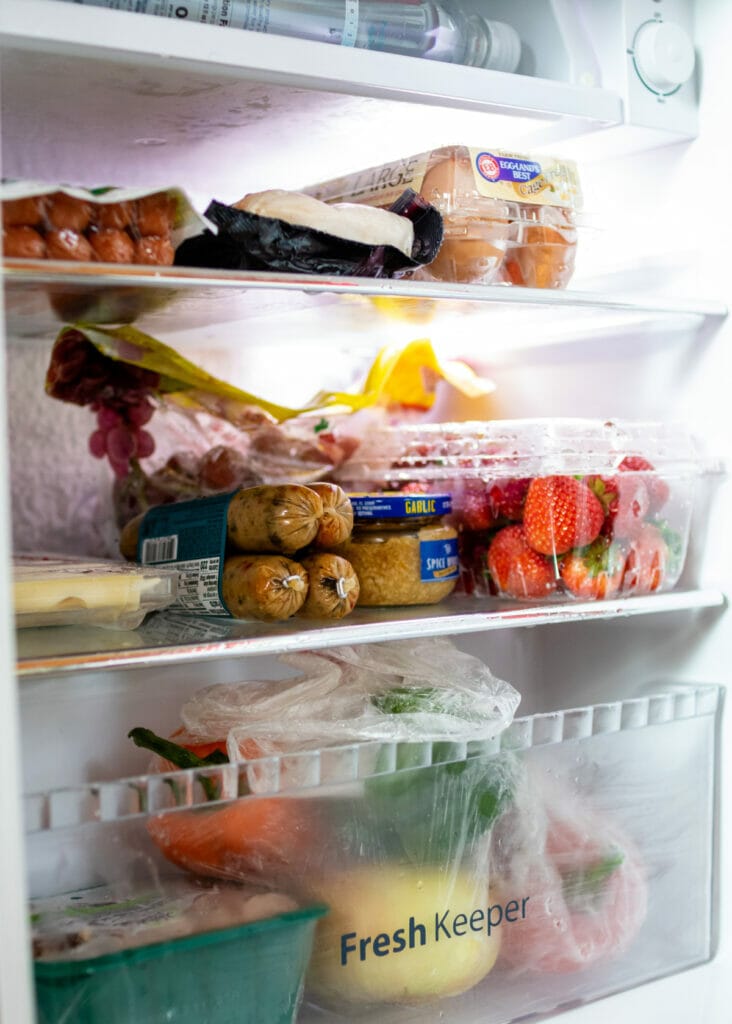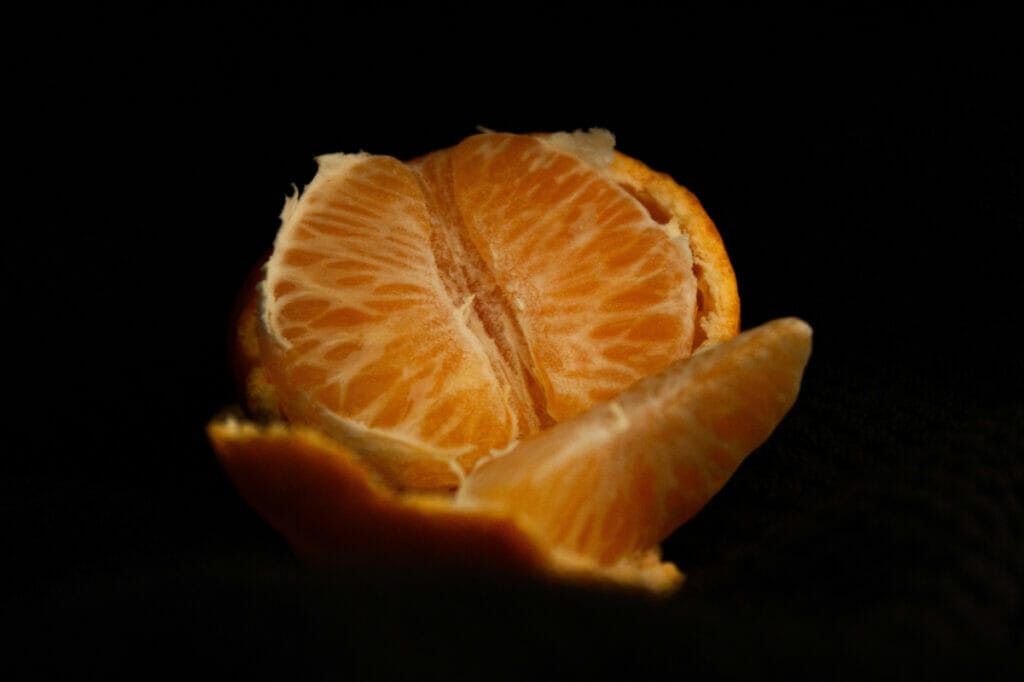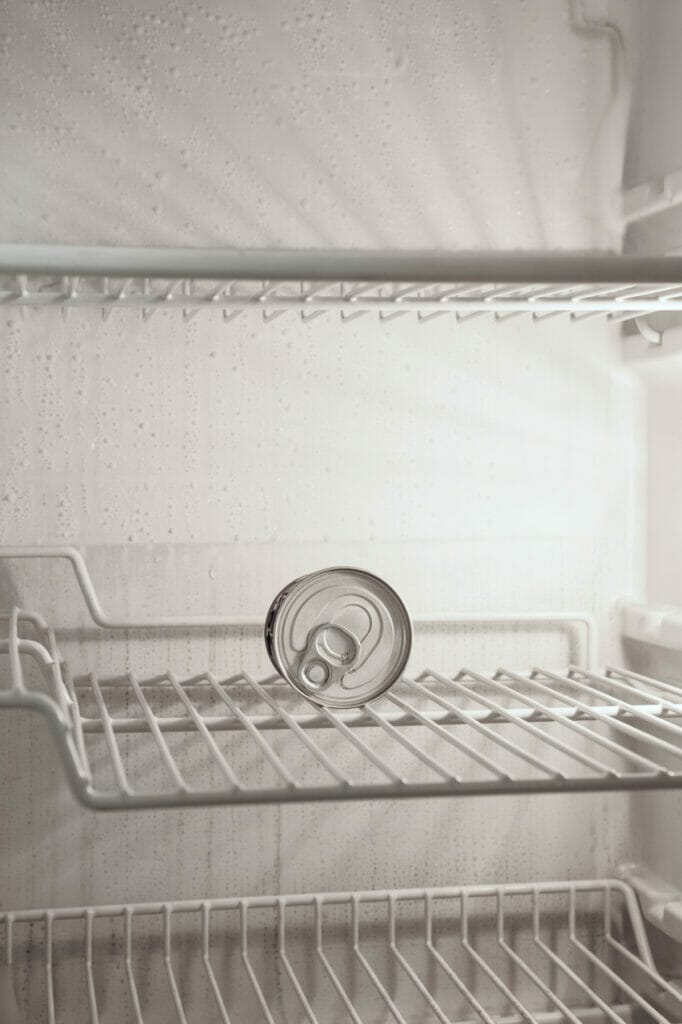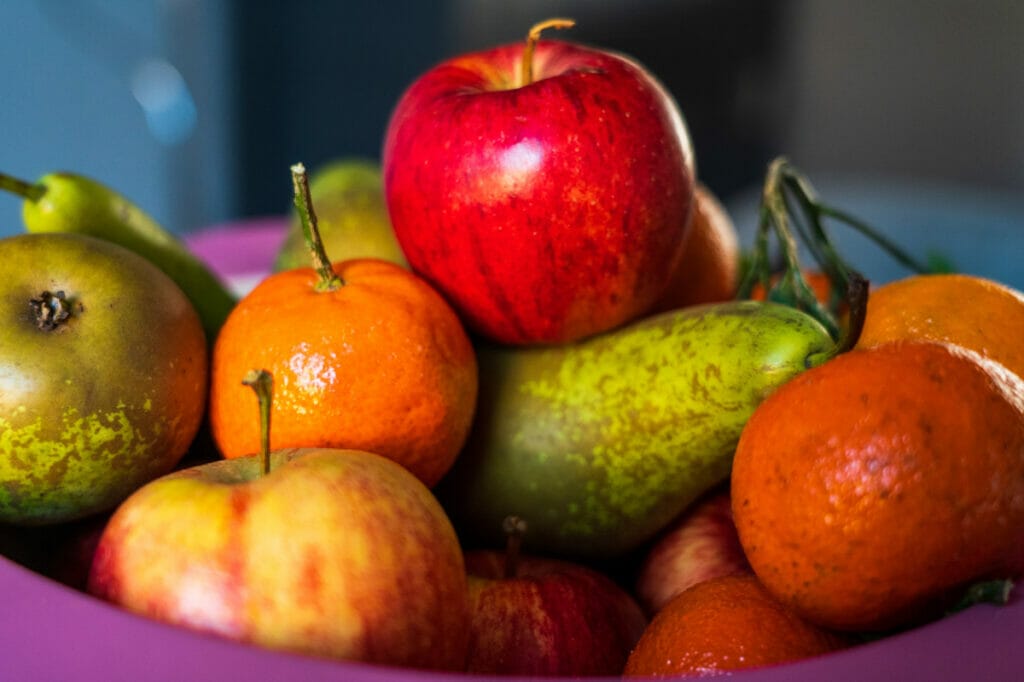As an Amazon Associate, I earn from qualifying purchases. In addition, I participate in several other affiliate programs that allow me to earn while I recommend products I love.
Clementines, one of America’s favorite snacks (you may also know them as Cuties, a brand name), are a delicious citrus fruit that’s easy to peel with few seeds.
Clementines are extremely closely related to the tangerine, but they’re a little bit smaller and the orange color is a bit brighter than that of a tangerine.
Whether you use them in baking, eating whole (great for lunches) or chopping up and adding to a recipe, it’s important to learn how long clementines last and figure out how you know when clementines go bad so you can make sure you’re not consuming anything spoiled.
Luckily, it’s very easy to tell if a clementine has gone bad, and there are some tips when it comes to storage to make sure they don’t spoil as fast.

Our Favorite Quirky Kitchen Gadgets
- Select-A-Spice Auto-Measure Carousel – Get your exact spice amount without measuring spoons with this spice carousel. Simply twist the dial for a perfect 1/4 teaspoon measurement!
- Silicone Utensil Rest with Drip Pad – This utensil rest keeps my countertops neat & drip-free!
- Snap N Strain Pot Strainer and Pasta Strainer – I love this strainer because it fits on all pots and pans while also being compact and easy to use!
- Herb Scissors Set – I use these scissors to cut and mince fresh herbs directly into any dish without the tedious work of cutting each herb or dirtying up a cutting board.
- Knife Sharpener – I love how quirky and nifty this rhino shaped knife sharpener is. It definitely puts the FUN in functional!
Do Clementines Go Bad?
Yes, clementines do go bad!
Unfortunately, like all fruits, they will spoil and go bad.
Fruits have enzymes that continue to work throughout the shelf life of the fruit, and these enzymes will break down the fruits and lead to browning, discoloration, and more.
There is also the risk of bacteria and molds.
These microorganisms will essentially devour the fruit, and as the process goes along, they’ll release more enzymes and the process continues until you have a moldy, discolored, squishy-in-all-the-wrong ways clementine rather than a more firm and orange one with a smooth skin.

How Long Do Cuties Last
Overall, clementines last for 1 to 2 weeks depending on the storage method.
Many people leave their clementines at room temperature, where you can expect them to last about 7 days.
How Long Do Clementines Last in the Refrigerator
In the refrigerator, clementines should last up to 2 weeks.
While some people don’t like the taste of cold clementines, putting them in a relatively cold and dark place like the fridge will help them keep their freshness and keep them out of the way of natural light.

How Long Do Clementines Last Unpeeled
If you’ve unpeeled your clementine, but don’t want to eat it right away, expect it to last 1-2 days at room temperature and 2-4 in the refrigerator.
Unpeeled clementines lack a lot of the protection of peeled ones, and can more easily go soft and soggy.
You really shouldn’t be peeling your clementines that far in advance, anyway.
They’re so easy to peel that most people just peel them at the point they’re going to eat them, and if you need to peel in advance for a recipe or for sending in a lunchbox, the day of or day before is fine.

How Long Do Clementines Last in the Freezer
If you want to extend the shelf life of your clementines, consider putting them in the freezer!
Clementines will last in the freezer for about 6 months to 1 year.

How to Store Clementines
Let’s talk about clementine store to make those clementines last as long as possible.
There are three main ways to store your clementines.

Freezer
You can freeze your clementines! Maybe you bought a lot when they were in season from November to April, or maybe you want to use them in other ways like baking throughout the year.
Freeze your clementines whole and they’ll last for 6 months to 1 year.
Freeze your clementines unpeeled and cut into segments and they’ll last about 3 months.
To do this, simple peel and cut your clementines and throw them together in a freezer safe bag or container.
Freeze your clementines in segments in a simple syrup and they’ll last about 1 year.
To do this, you’ll want to make a simple syrup for fruit preserving and store unpeeled and cut slices of the clementine in this syrup in a freezer safe container.
Keep in mind that thawed clementines are not necessarily the best for eating raw.
They can be great for going into a fruit salad (that’s already mushy) or using in baking, but you won’t get the firmness of a fresh clementine.
However, it is the best way to store clementines if you want to make them last the longest and prevent them going bad if you can’t use them right now.

Refrigerator
Many people want to know, “do clementines need to be refrigerated.”
The answer is no, you can store them at room temperature, but they’ll last longer in the fridge.
When storing them in the fridge, it’s usually best to use the fruit or vegetable drawer (often known as the crisper) that will help keep the clementine away from other bacteria and moisture in the fridge.
You can pile them together in the fridge instead of storing them individually, but don’t squash them with other products.
If you just have a few clementines, store them in the refrigerator door so you don’t forget about them.

Room Temperature
Clementines do go bad at room temperature, but you’ve usually got about 5 days to a week before that happens.
We put them in a fruit bowl with plenty of air circulation, away from other fruits (sometimes gases from other fruits can speed up the spoiling process).
Try to store them away from natural light to prevent discoloration and mold growth from the clementines heating up in the sun.
This is the easiest way to store clementines and will save you room in the fridge if you’re planning on eating them all within the week.

How Do You Know when Clementines Go Bad?
Clementines have a few tell-tale signs when they go bad.
Wrinkled skin
The skin on a fresh clementine will be taut and relatively smooth with tiny pit marks in it.
It looks just like an orange peel from out of an ad, where it’s smooth and silky feeling when you run your hand across it.
When clementines go bad, this skin becomes wrinkly and puckered in.
If you spot this on a clementine, it’s usually best to assume it’s bad.
Loose skin
When you peel a fresh clementine, the skin is very closely connected to the fruit inside.
You’ll feel like you’re peeling it directly away from the fruit.
When clementines go bad, the skin can get very loose and pull away from the fruit inside.
You’ll be able to tell if a clementine is bad because you’ll go to peel it, and it will feel like there is a gap of air in between the peel and the fruit.
If the skin is loose, wrinkly, or saggy, it’s time to get rid of it.

Mold growth
Mold growth is the easiest thing to spot on a bad clementine, and is often what happens the further into its shelf life it gets (especially if it has been left at room temperature or exposed to heat).
You’ll often notice a blue colored mold, but you could also see spots of white or black.
Do not eat clementines that have mold on them, even if the fruit inside looks “okay.”
Discoloration
You might not notice specific mold spores on the clementine peel, but if it is discolored in any way or any color but a bright orange, this should give you pause and make you wonder what is wrong with the fruit.
Pungent smell
If you’ve opened up your clementine and you don’t notice any of the above, you might think it’s good to eat.
Before you dig in though, do a smell test.
Bad clementines have a pungent smell, not a fresh and citrus-y one.
If it smells “off” or not like you would expect a citrus fruit to smell, ditch it.

What Can I Do with Old Clementines?
You shouldn’t consume old clementines if you feel they’ve gone bad, but if they aren’t too far into their spoiling process, you can leave them in your backyard for animals like squirrels, deer, and birds.
If they are not moldy, but simply have gone softer and soggier, you could also try turning them into this marmalade with clementines.
